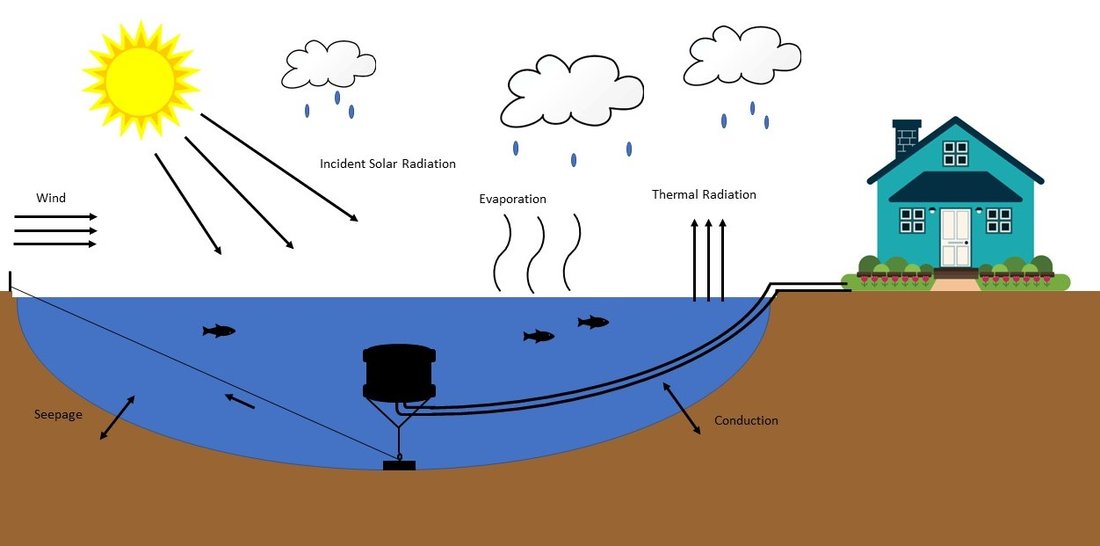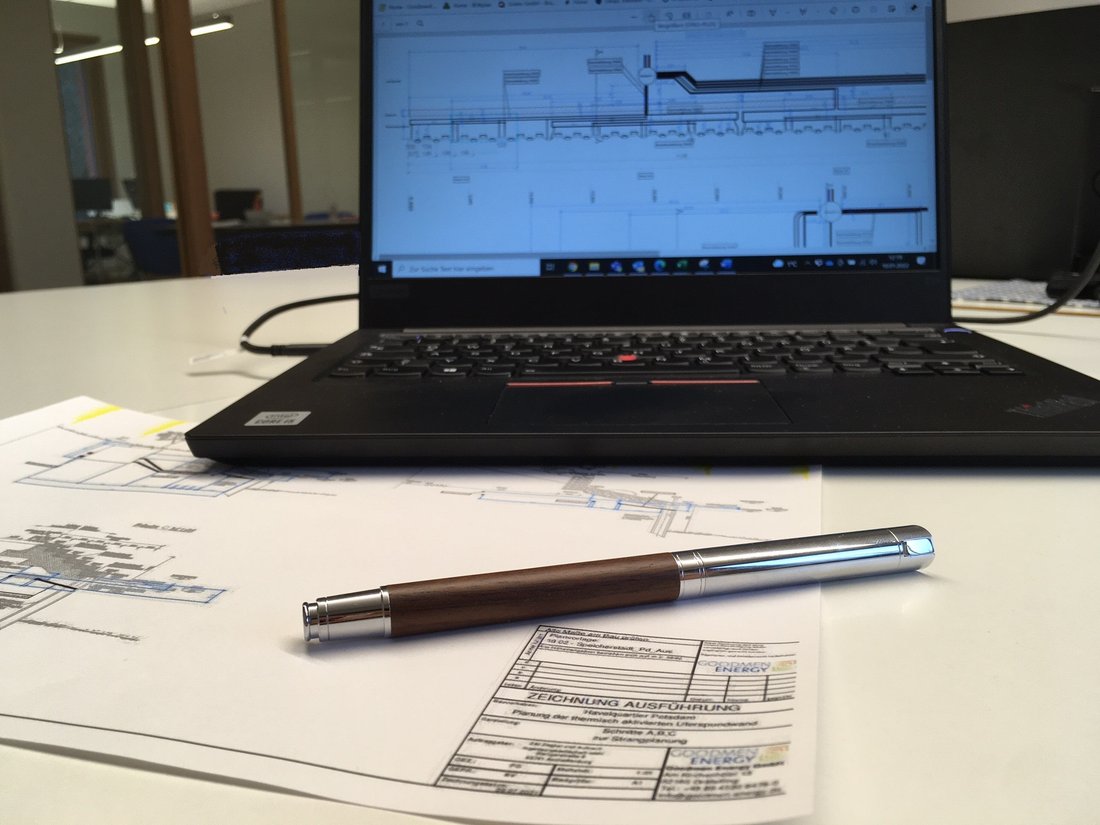Aquathermy - systems and benefits
Science attaches considerable importance to this topic: Due to the heat pump, which has become more and more efficient (also cost-efficient) during the last years, the use of freely available, free low-temperature heat is becoming more and more interesting. With the help of the heat pump, this heat from the ground, air, rivers and lakes or waste water can be brought to a higher temperature level and thus made usable. Experts agree that the triumph of the heat pump with the use of low-temperature heat has only just begun.
Even cold water contains heat energy
Many people cannot even imagine that water, which only measures a few degrees Celsius, could be considered as a heat source. But modern heat pumps can extract heat even when the source is rather cold. The heat energy is used so efficiently that it can be used to heat or cool buildings. In aquathermy, a heat exchanger extracts the energy from the water. There are different systems.
Energy baffles: district supply with aquathermy
Energy sheet pile walls, which are driven into the ground on river banks or, for example, in a harbour basin, are suitable for the development and supply of large buildings and entire neighbourhoods and border the water on one side and the land on the other. Geothermal heat exchangers are installed on the land side and operated with a heat pump. The system forms a closed circuit in which a heat transfer medium is used and is therefore harmless in terms of any environmental hazard. Due to their geometric and physical properties (high thermal conductivity and large transfer surface), steel sheet pile walls are particularly suitable for thermal use and can be used for heating and cooling. In addition to the previous static and sealing functions, sheet pile walls are thus extended by an energetic function.
Energy sheet pile walls can be used excellently for neighbourhood supply, as well as for large district heating networks at public utilities and municipal providers. Contracting models are also interesting in this context.
Heat recovery for single-family homes
Single-family houses or houseboats can be supplied with an easy-to-install heat exchanger that is fixed in the water. Depending on the product, this involves more or less effort. With some models, care must be taken to ensure that they are located deep enough in the water so that they do not freeze in winter. Other models require an additional heater to prevent freezing. There are products with large space requirements and others with minimal space requirements. The installation should be done in such a way that good water circulation is still possible. Ideally, the water should be at least 1.40 metres deep, so that the temperature withdrawal does not have too great an effect. It is irrelevant - at least in the case of heat exchangers made of plastic - whether the water is fresh or salt water.
Aquathermy use: What is important to consider?
Aquathermy can be obtained from different sources. We distinguish between
- Thermal energy from surface water (TEO), e.g. from lakes and rivers
- Thermal energy from waste water (TEA)
If thermal energy is extracted from a body of water, this always represents an intervention in the environment. Therefore, it is first necessary to check how cooling the water body in question will affect its flora and fauna. In a lake, the probability of consequences is greater than in a flowing body of water, where the water is constantly renewed. But even in a lake, the consequences are not necessarily negative: if heat is extracted in summer, for example, this can reduce algae growth - a thoroughly positive effect.
Waterworks are also often positively disposed to the idea of thermal use of surface waters, because this achieves a cooling of waters that are already too warm. Another example: If the hot water in a neighbourhood heating network is heated by means of a heat pump - powered by photovoltaic electricity and aquathermy - this has multiple benefits for the environment: on the one hand, photovoltaic electricity and electricity surpluses (when solar radiation is high) are used sensibly for own consumption, and on the other hand, heat is extracted from the surface water.
Wastewater: Perfect for aquathermy
The use of thermal energy from wastewater is particularly interesting from a sustainability point of view. In contrast to the use of aquathermal energy from bodies of water, there is no need for a river or lake in the vicinity - everyone produces wastewater themselves all the time. Integrated into a district heating network, energy efficiency is increased by short transport routes and thus low heat losses - an ecologically and financially interesting system for cities and municipalities. Without any consequences for the environment, the wastewater heat technology can also be used for cooling in summer by feeding the heat from the houses into the wastewater network.
We at goodmen energy have the necessary know-how regarding sources and their use, give you professional advice regarding suitable subsidies, carry out feasibility studies for your neighbourhood and have an excellent network of appropriate company contacts for the efficient implementation of your project. Contact us - by phone, email or via the contact form on the website.



![[Translate to English:] Flussschleife Deutschland](/fileadmin/_processed_/4/d/csm_Blog_09_Fluss_Photo_by_Thibault_Milan_on_Unsplash_855f802e98.jpg)


